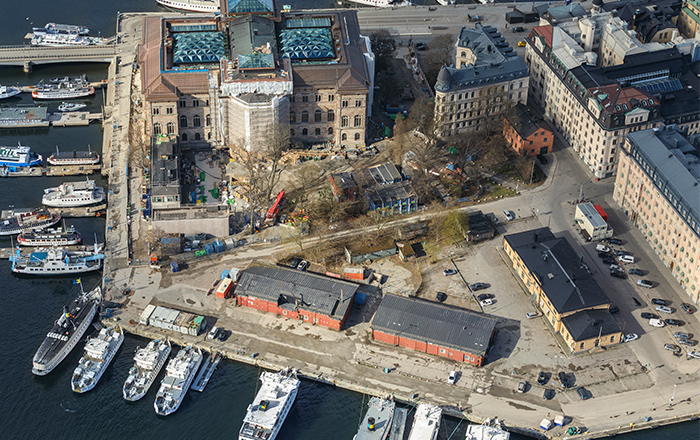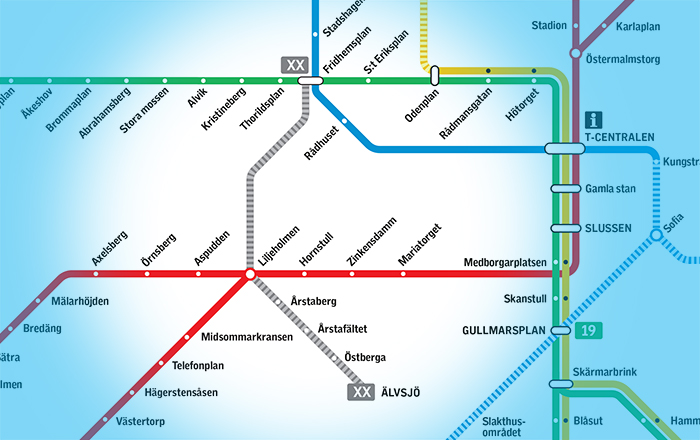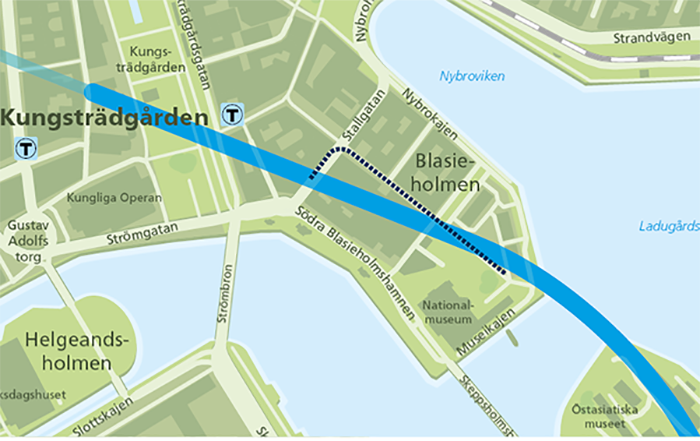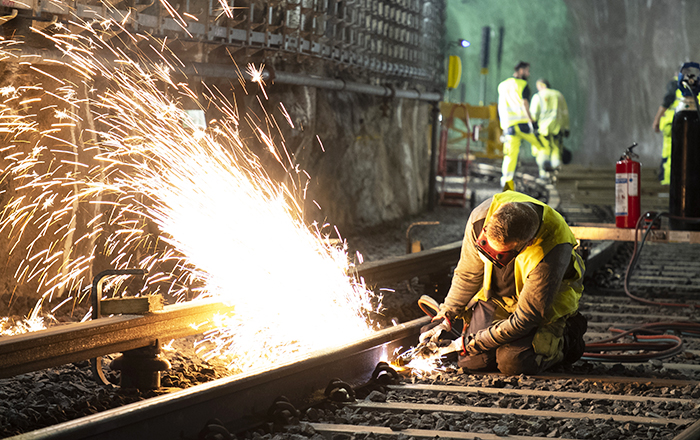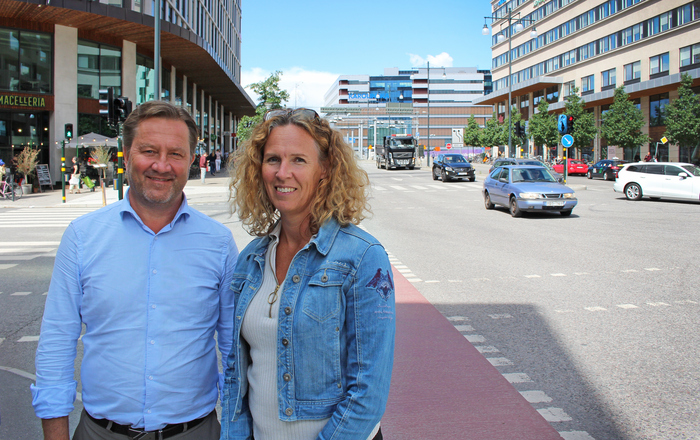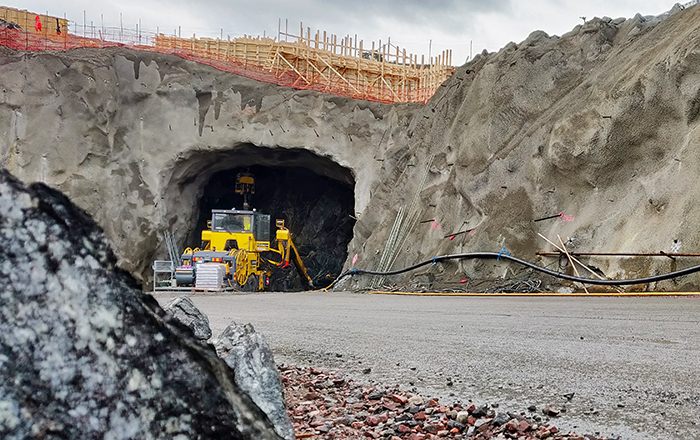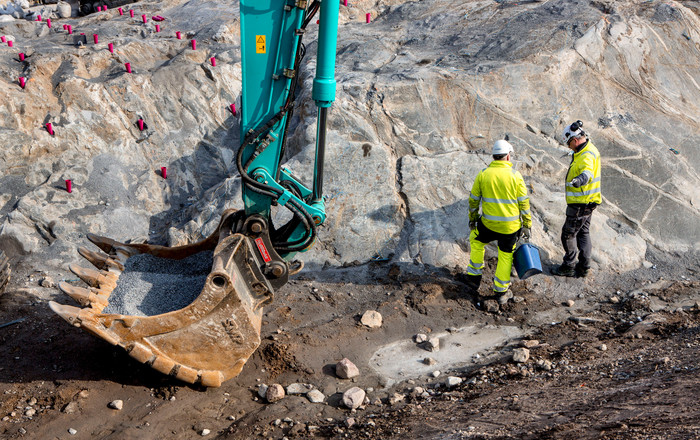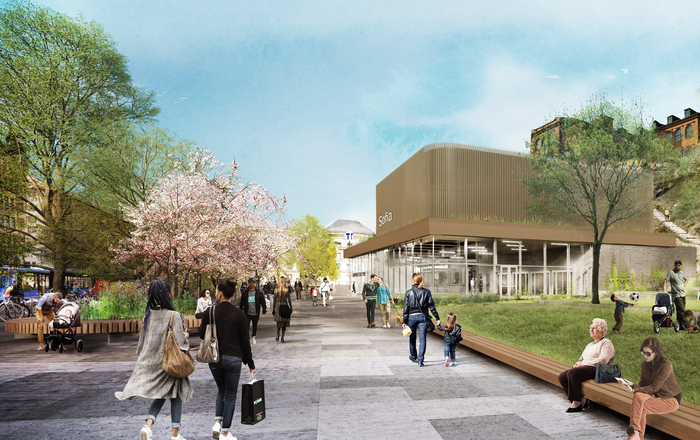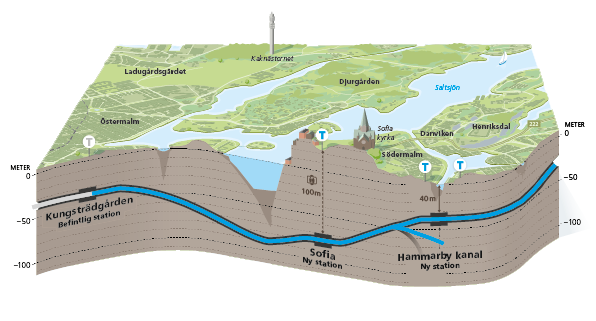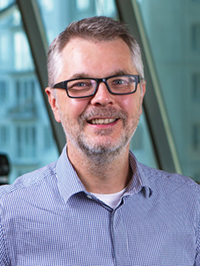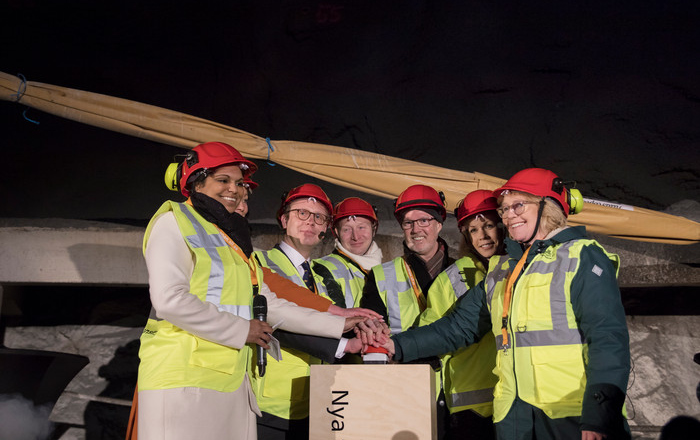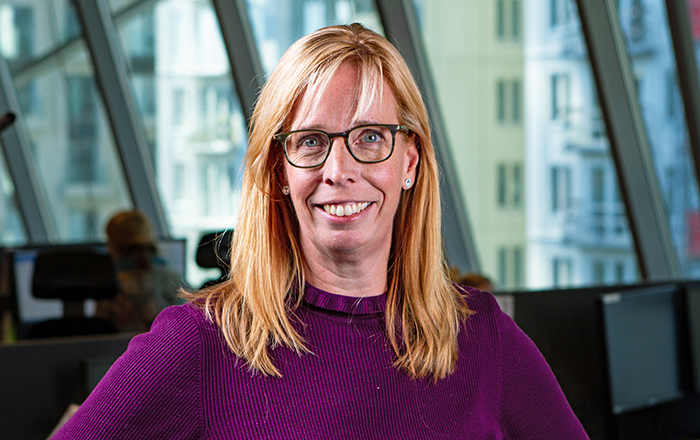Now when the Metro is to be extended southwards from the station in Kungsträdgården, the same construction tunnel will be used as that used in the 1970’s. The tunnel contains fill from the last time the Metro was extended.
In October, Region Stockholm and the City of Stockholm performed a test by loading some of the blasted rock and excavated soil on to a ship, to determine, among other things, how the noise generated by the loading would be experienced in the surroundings. We have now received the results:
“From what we can see, there will be no major difference for the immediate surroundings when it comes to noise. Both transporting the excavated rock by truck and loading it on to a ship or barge fall below the noise requirements that we have been ordered to meet in our environmental rulings,” says Andreas Burghauser, Project Director for the Blue Line to Södermalm. 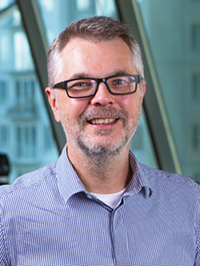 Boat transport better for the climate
Boat transport better for the climate
The report that is now finished has not only looked at sound in the surroundings, but also at the economy and the impact on the climate. The costs will be approximately the same for both alternatives. On the other hand, boat transport is better for the climate in the scenario that is considered in the report. The trucks will need to drive through the inner-city area via Strandvägen, whereas the boats in the scenario will pass through the locks at Hammarby and then continue to Södertälje.
“Now we have learnt a lot more. This outcome means that we will continue as planned and those contractors who want to submit tenders for the work will need to show us how they intend to work with both alternatives and what they cost,” says Andreas Burghauser.
Not yet clear where the material will be transported
The continued work on drilling and blasting the Metro from Kungsträdgården is calculated to begin in approximately a year’s time. Then the construction tunnel will be used to remove excavated rock and soil for another two to three years. Exactly where the excavated rock material will be received has not yet been decided, irrespective of how it is transported.
“This is something we are continuing to work on together with the City of Stockholm,” says Andreas Burghauser.
